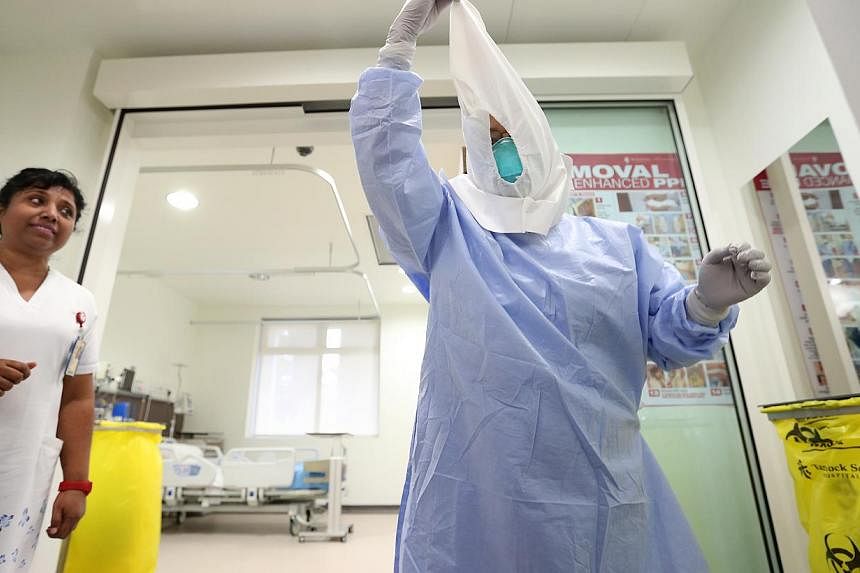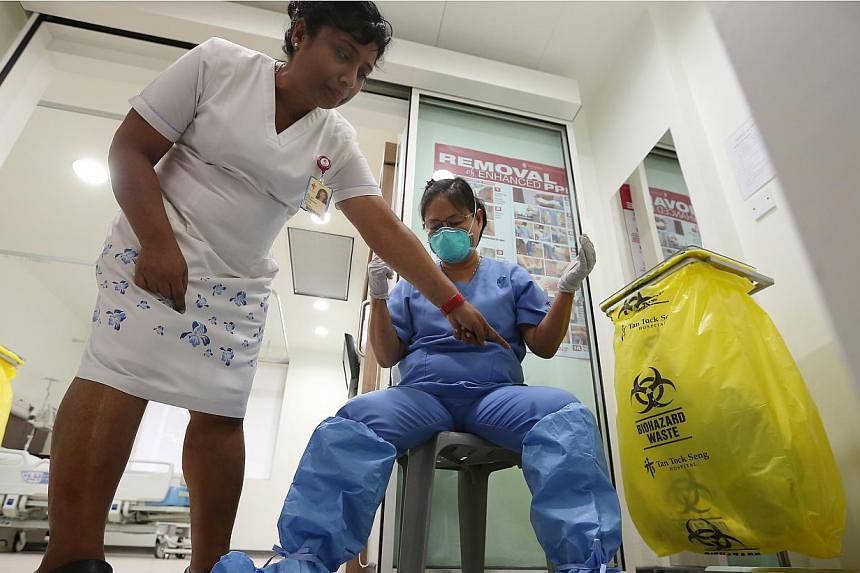Singapore - The Ebola virus kills more people, but is less easily spread in the community than Sars (severe acute respiratory syndrome), said infectious diseases experts yesterday.
It is more dangerous to healthcare workers treating patients, since the virus is spread through contact with bodily fluids. Sars was airborne.
An Ebola patient is not infectious until symptoms, such as fever, body ache and extreme tiredness, appear.
Dr Derrick Heng, group director for public health at the Ministry of Health (MOH) said its rapid spread in Africa is due to the common cultural practice of family members caring for the sick and touching the bodies of the dead.
Professor Leo Yee Sin, head of the Communicable Diseases Centre, said, generally, the risk to healthcare workers is higher since they are the ones handling the patient.
This is why any worker dealing with a suspected Ebola victim will be properly gowned in impermeable material that will "cover every inch of their body".
Tan Tock Seng Hospital, which includes the CDC, has 10,000 pieces of such personal protection equipment, which has to be disposed of once used.
All suspected and confirmed cases will be transfered to the CDC in a special ambulance, and if necessary, in a portable medical isolation unit.
So far, there has been three suspected cases, with only one fitting the criteria of having travelled to an affected country and having the symptoms. This was a patient from Khoo Teck Puat Hospital who was transfered to the CDC on August 17. She was later found not to have Ebola.
Professor Ben Ong, the Director of Medical Services at the MOH said healthcare workers have been trained to deal with Ebola cases, though he added that the risk of it being imported is low.
This is because only about 330 people come here each month from the affected countries in Africa.
Should it come, he is confident Singapore would be able to contain the disease and prevent it from spreading.




